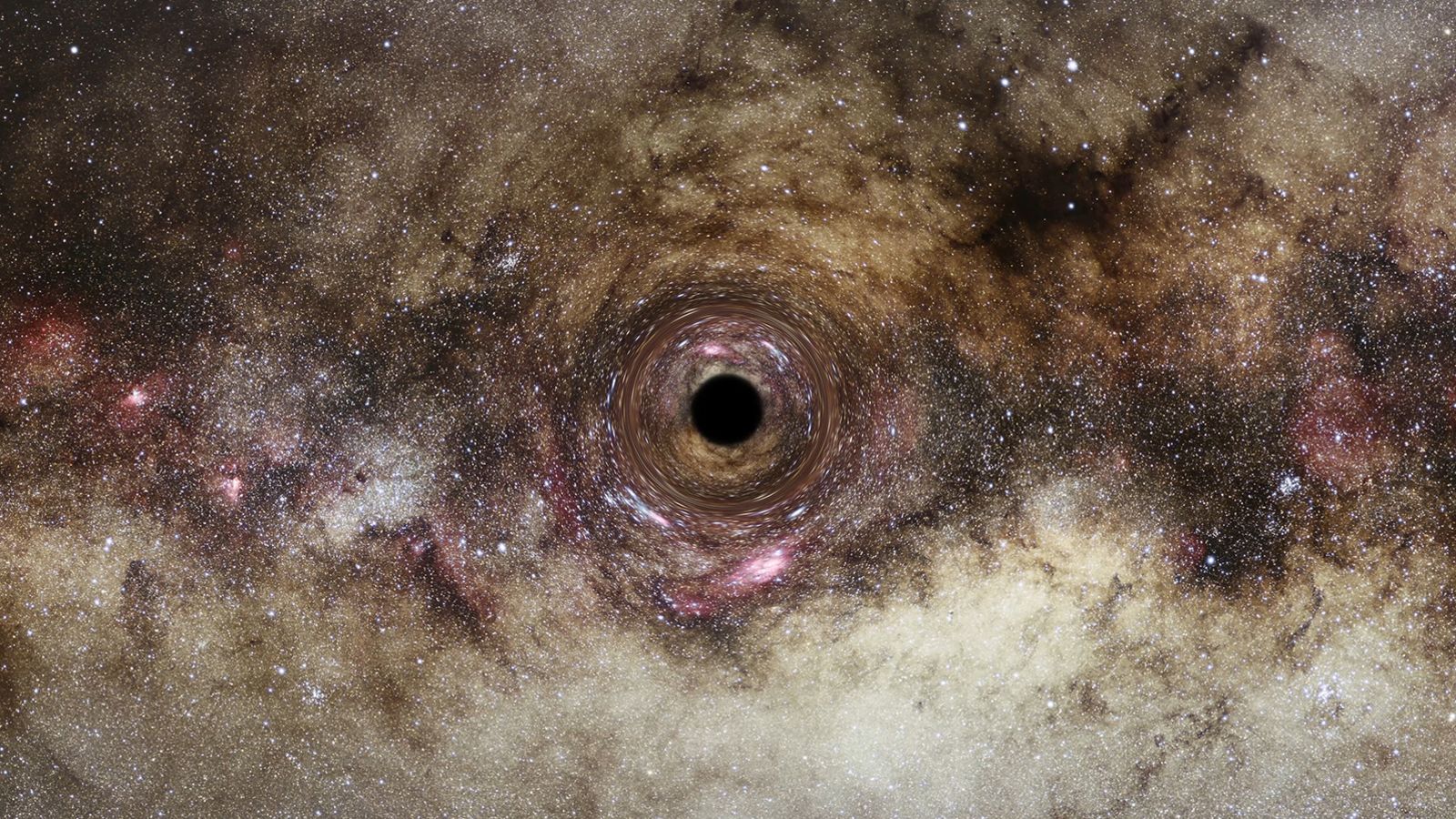(CNN) – Astronomers have discovered a supermassive black hole, considered one of the largest black holes ever, using new technology.
The results, published by the Royal Astronomical Society, show that the black hole is more than 30 billion times the mass of the Sun, a scale rarely seen by astronomers.
The researchers described it as an “extremely exciting” discovery that opens up “tempting” possibilities for discovering more black holes.
The team, led by Durham University in the UK, used a technique known as gravitational lensing, in which a nearby galaxy is used like a giant magnifying glass to deflect light from a more distant object. This allowed them to examine how the black hole bends light inside a galaxy hundreds of millions of light-years away from Earth.
Supercomputer simulations and images taken by the Hubble Space Telescope have also been used to confirm the size of the black hole.
It’s the first black hole detected using gravitational lensing, with the team simulating that light travels through the universe hundreds of thousands of times, according to a Royal Astronomical Society press release.
Artist’s work of a black hole in the Milky Way.
“This particular black hole, about 30 billion times the mass of our sun, is one of the largest ever discovered and is at the upper end of how massive black holes are theoretically, so it is a very exciting discovery,” said study lead author James Nightingale, a scientist. Observational cosmology in the Department of Physics at Durham University.”
“Most of the largest black holes that we know of are in an active state, as matter that approaches the black hole heats up and releases energy in the form of light, X-rays and other radiation,” Nightingale added.
However, gravitational lensing makes it possible to study quiet black holes, which is not currently possible in distant galaxies. This approach could allow us to discover many more black holes outside our local universe and reveal how these exotic objects evolved back in cosmic time.”
The researchers believe the discovery is important because it “opens up the tantalizing possibility that astronomers might discover black holes that are quieter and more massive than previously thought” and “investigate how they grow so massive,” according to the press release.
The story of this particular discovery began in 2004 when astronomer Alastair Edge, a research fellow at Durham University, noticed a giant arc of gravitational lensing while reviewing images from the Galaxy Survey, according to the press release.
The team has now reviewed and explored the discovery further with the help of NASA’s Hubble Telescope and the DiRAC COSMA8 supercomputer.
Extremely massive black holes are the largest objects in the universe and are a rare find for astronomers.
Their origins are unclear, and some believe they were formed from a merger of galaxies billions of years ago.
Every time one galaxy merges with another, stars are lost and a black hole gains mass, which explains the incredibly high mass of some black holes.

“Proud web fanatic. Subtly charming twitter geek. Reader. Internet trailblazer. Music buff.”

:quality(85)/cloudfront-us-east-1.images.arcpublishing.com/infobae/TEQF6EONZRFGLLLDIDD4L2O4EE.jpg)

:quality(75)/cloudfront-us-east-1.images.arcpublishing.com/elcomercio/XU32LRAEZFDDPNVHLFU3CKVBYY.jpg)



More Stories
How to create 3D videos with my iPhone, it will be very useful even for your business
NASA discovers an anomaly in the Earth’s magnetic field that could have serious consequences for humans
Can the Earth be divided into two parts?